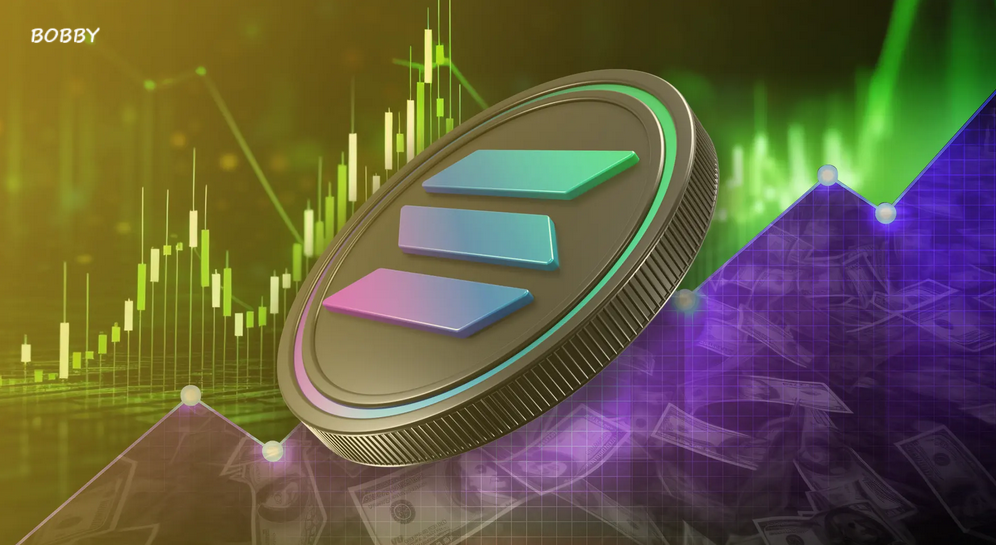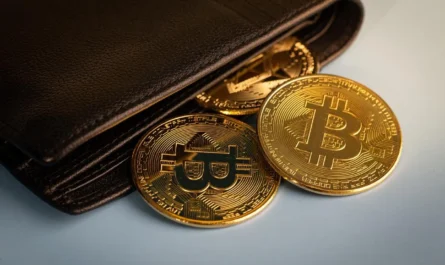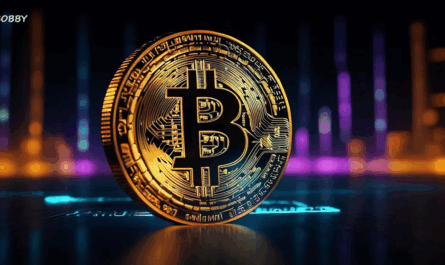Stocks and bonds have long been the cornerstones of wealth creation. They’re relatively stable, well-regulated, and supported by decades of financial data. However, the world of cryptocurrency has introduced a new level of excitement—and risk—that traditional assets simply can’t match.
Take Solana (SOL), for example. Over the past five years, its price has surged by more than 9,400%, a staggering figure that highlights crypto’s potential to turn small investments into massive fortunes. By comparison, the S&P 500—the benchmark for U.S. stocks—returned around 96% in the same period.
But with the crypto market maturing and economic uncertainty rising, the real question is: Can Solana continue its rapid climb, or has its best growth already passed? Let’s take a closer look at what sets Solana apart, the risks it faces, and whether it still deserves a place in your portfolio.
The Case for Diversifying Away from the Dollar
In 2025, one of the biggest financial themes is currency risk. Many Americans invest heavily in U.S.-dollar-denominated assets—stocks, bonds, and real estate. While this strategy may feel safe, it exposes investors to the risk of a declining dollar.
This year alone, the U.S. dollar index, which measures the dollar’s strength against other major currencies, fell by 8.8%. That decline effectively reduced the S&P 500’s nominal 14.5% gain to a much smaller real return.
With growing concerns about U.S. fiscal policy, mounting national debt, and uncertainty around the Federal Reserve’s independence, many investors are rethinking their approach.
Here’s where cryptocurrency offers a unique hedge. Unlike the dollar, crypto assets aren’t tied to any one nation’s economy or monetary system. Investors use them to diversify beyond fiat currencies, reducing exposure to inflation and policy-related risks.
In this environment, Solana has emerged as one of the strongest contenders for long-term crypto exposure.
Why Solana Stands Out Among Cryptocurrencies
While many cryptocurrencies are built on similar frameworks, Solana has carved out a distinct identity through its speed, scalability, and innovation.
Launched in 2020, Solana quickly climbed into the top ten cryptocurrencies by market capitalization, currently valued around $100 billion. Its rise can be credited to both its technical innovation and developer-friendly ecosystem.
A Technological Edge: Proof of History (PoH)
Solana’s biggest breakthrough is its Proof of History (PoH) system. Unlike traditional blockchains that rely solely on Proof of Work (Bitcoin) or Proof of Stake (Ethereum), Solana timestamps transactions in advance.
This design allows the network to process up to 50,000 transactions per second, compared to Ethereum’s 15–30 transactions per second. The result is faster speeds, lower costs, and greater scalability—qualities essential for mass adoption.
Solana combines PoH with a Proof of Stake (PoS) mechanism, allowing users to stake SOL tokens to validate transactions and earn staking rewards in return. This hybrid model creates a self-sustaining ecosystem where speed meets efficiency.
Developer Adoption and Real-World Use
Solana’s rapid growth isn’t just about technology—it’s also about adoption. Like Ethereum, Solana supports decentralized applications (dApps), NFTs, and DeFi platforms. Its scalability makes it especially attractive for developers looking to build high-performance blockchain projects.
Recently, Solana gained attention when Donald Trump’s “Official Trump” cryptocurrency—with a market cap exceeding $1.2 billion—launched on its network. Although meme-inspired tokens like this are volatile and short-lived, they bring visibility, transaction volume, and liquidity to the Solana ecosystem.
In essence, even speculative projects benefit Solana by boosting transaction fees, increasing staking demand, and strengthening brand awareness.
Can Solana Still Make Investors Millionaires?
After a 9,400% gain, some might assume Solana’s best days are behind it. And it’s true—achieving another tenfold surge from here would be far more difficult.
However, Solana remains a strong long-term investment for several reasons:
-
Macroeconomic Tailwinds – As global investors seek alternatives to the U.S. dollar and traditional banking systems, cryptocurrencies like Solana could continue to benefit.
-
Strong Technological Foundation – Solana’s transaction speed, network efficiency, and lower fees give it an edge over most competitors.
-
Ecosystem Expansion – From DeFi to gaming and NFTs, Solana’s developer ecosystem continues to grow, ensuring more long-term demand for SOL tokens.
-
Attractive Staking Rewards – Solana offers around 4.3% annual rewards for staking, according to Coinbase Global. This passive income stream outpaces the S&P 500’s average dividend yield of 1.2%, providing investors with an additional reason to hold long-term.
While the potential for another 9,000% rally is unlikely, steady growth—combined with staking income—could make Solana one of the most resilient and rewarding crypto assets in the years ahead.
Risks Investors Should Consider
Of course, no investment is risk-free—especially in the volatile crypto market. Solana faces several potential challenges:
-
Network Outages: Solana’s speed has occasionally come at the cost of stability, with past network slowdowns and temporary outages raising concerns about scalability.
-
Competition: Ethereum’s shift to Proof of Stake and the rise of newer blockchains like Avalanche and Cardano mean Solana must keep innovating to maintain its lead.
-
Regulatory Pressure: Governments worldwide are tightening crypto regulations. Any negative policy shift—especially in the U.S.—could impact Solana’s liquidity and market access.
-
Market Cycles: Like all digital assets, Solana remains sensitive to market sentiment. Periods of high volatility can lead to significant short-term losses.
That said, Solana’s ability to recover from past technical issues and continue expanding suggests strong resilience and leadership.
Should You Invest in Solana Now?
Whether Solana fits your portfolio depends on your risk tolerance and investment horizon. For investors who can handle volatility and are looking for long-term exposure to blockchain innovation, Solana remains one of the most compelling options in the crypto space.
It combines the speed of innovation, earning potential through staking, and increasing adoption across DeFi and NFT platforms.
However, investors should avoid putting all their money into a single crypto asset. A diversified strategy—mixing Solana with other top cryptocurrencies like Bitcoin or Ethereum and traditional assets—helps balance potential returns and risk.
Final Thoughts
Solana’s incredible rise over the past five years reflects more than hype—it highlights how blockchain technology is reshaping digital finance. Even though the days of explosive 9,000% returns may be over, Solana’s fundamentals, developer momentum, and income opportunities position it as a top-tier long-term crypto asset.
In a world where the U.S. dollar faces increasing headwinds, investors looking for diversification and growth may find Solana’s combination of speed, scalability, and staking rewards hard to ignore.
For those ready to embrace the next evolution of digital investing, Solana might just be the bridge between traditional finance and the decentralized future.
FAQS
1. Is Solana still a good investment in 2025?
Yes. Solana remains one of the fastest and most scalable blockchains, with strong developer activity and attractive staking rewards. It offers long-term potential, though investors should be aware of crypto market volatility.
2. How does Solana differ from Ethereum?
Solana uses a unique Proof of History (PoH) mechanism that enables faster transaction speeds and lower fees compared to Ethereum, making it ideal for high-performance decentralized applications.
3. What are the risks of investing in Solana?
Key risks include market volatility, potential network outages, competition from other blockchains, and tightening cryptocurrency regulations.




